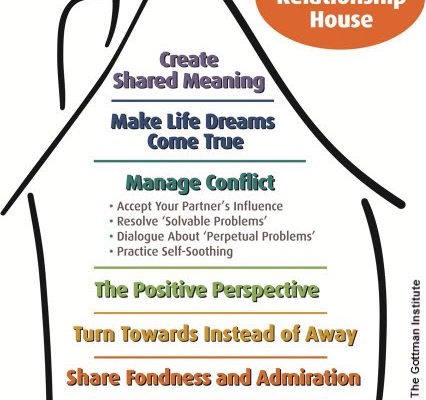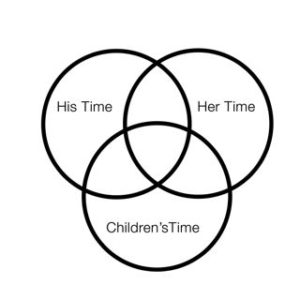
Bringing the hidden to light is an important part of psychotherapy, sometimes achieved through focus on intellectual reflections. But in recent years, mindfulness-based therapies emphasize awareness of how feelings and physical sensations are related. It is enlightening to notice what happens in the body when we feel strong emotions.
As an example of how lack of mindfulness can hurt, I would sometimes react with anger at my husband when he disagreed or corrected me. But rather than seeing my point of view, he only experienced my anger as defensiveness, while I experienced him as overbearing. The result was that I felt worse.
This pattern continued until I learned to slow down my automatic reaction of anger, by becoming aware of the physical sensations that accompanied my feelings. This allowed me to become aware of the small, fleeting, and easily overlooked span of time between my internal commentary about his comment and my emotional reaction.
What was surprisingly helpful in doing this was to become aware of physical sensations; in mindfulness practices, we call this “mindfulness of the body.” Sleuthing out my emotions when corrected by my husband, I could actually feel my hackles go up. It was subtle but unmistakable.
Sensing our Hackles Before a Fight
When a dog’s hackles go up, the hair between their shoulder blades becomes erect as an automatic reaction to feeling threatened. As Adrienne Janet Farricell, a certified dog trainer explains, special muscles attached to hair follicles “are innervated by the sympathetic branch of the autonomic nervous system and are therefore not under conscious control. The function allows the dog to appear larger, taller and therefore more intimidating than it is. This is a ‘fight or flight’ response triggered by adrenaline.”
Paying attention to my physical response after my husband criticized me, I began to sense that distinct feeling of my hackles going up. But what surprised me even more was what followed: I felt myself contract, my shoulders dropping and my chest becoming slightly concave. I submitted instead of fighting, just as a dog lies submissively on the ground. In the animal world, cowering is a useful and self-protective signaling “I am not a threat to you, so you don’t need to attack me.“ But when we humans do that, we lose some of our power.
Paying attention to this small and subtle sequence of physical sensation help us notice the physical reactions that often precede the ultimate expression of strong emotion. Without being aware of how we succumb to our initial reactions we are unable to address the problem that’s making us react.
Making the automatic conscious is liberating on many levels. First, we gain some control over our automatic responses—something dogs cannot easily do. Second, greater physical and emotional awareness lets us link direct relationship to felt experiences. Being able to name an experience or find an image for it, as I did with the hackles example, opens our understanding, bringing meaning to what on the surface looks like plain old anger.
It is important to know that an angry outburst is not always a bad thing. Anger is a reaction that often stands in for other feelings that are less available to us. Let’s imagine a typical couple’s situation of the sort I see in my practice. When Jill got angry at Sam, she didn’t always stop to feel what that anger signified. Their arguments escalated as they each get more flooded with emotions. But when Jill reflected on her anger, her felt-sense was of being small, childlike, and without a voice of her own. Childlike? Sure enough, just as she’d felt in her family growing up with three older brothers, she experienced Sam as being dismissive of her opinions and dominating her in a situation where she was powerless.
Sam, meanwhile, had no idea she was feeling this way, because all he saw was her childish, to him, outburst. He tagged Jill as being easily out of control, making him feel all the more self-righteous toward her, which further reinforced Jill—and Sam–feeling like Jill was the problem in the relationship. Sam was off the hook, and did not have to look at his role.
Pausing Before Reacting
As this example shows, our reactions and feelings may mean more than we consciously know. In some traditions such as Tibetan Buddhism, mindfulness translates as “to remember.” This process of witnessing our emotions and our physical sensations requires remembering to push the pause button before our automatic reactions take hold. In a disagreement between couples, this may mean agreeing to a time-out, or the pause may be as subtle as one breath—a period between two sentences. Pausing gives us the space to be aware without becoming stuck in automatic reactions, attacking back, or inwardly growing smaller and losing the essence of our feelings, which are usually quite valid.
This pause also gives us time to consolidate our understanding of our self. Jill recognized an old memory: that of being discounted, unheard, or dismissed. She also understood that when anger dominates, the more important issues get lost.
Being Alert to Underlying Emotions
Of course, staying calm while having hard conversations can be challenging. It helps to recognize the early and subtle signs that you are becoming flooded. Once flooded, meaningful conversations come to a grinding halt or turn into a yelling match. Be alert for automatic reactions. Remembering to pause before automatically reacting allows us to tune into the deeper, less conscious feeling: what emotions and what physical sensations are triggered?
At this point, we have a choice. We can either use our awareness to ask directly for a bit of time to get back in emotional balance before continuing. Or, we can use the pause to go deeper into what may be coming up from within. This doesn’t have to be a lengthy process; with practice, that pause can take mere seconds for insight to come.
And in that pause, when we bring awareness to physical sensations like raised hackles or a churning gut, we can use these as signals to look more deeply into our role in what is getting triggered. Too often our automatic response is to assume fault lies outside us, not within. As Cassius says, “The fault, dear Brutus, is not in our stars, but in ourselves.”
While taking responsibility for what is arising in us, we also need to be aware of its impact on others. When we do this, hackles go down and the back and shoulders lengthen, bringing real power, liberating the Self to be more fully alive and present. Our defense mechanism was only masquerading as power, and that briefly.
What is Your Role?
Taking responsibility does not result in guilty self-recrimination but liberation and power. Once we take ownership of our contribution to conflict, we can more readily bring insight and thus control over our automatic reactions. It may reveal qualities within us that are active and useful in opening us up to be freer, more whole in ways we‘ve barely glimpsed.
Being aware of our default defense mechanisms can help us deal more effectively with difficulty. While many defenses help us cope—psychologists call this defense in service of the ego—they can backfire and hurt us. Because defenses are unconscious, it’s difficult to be aware when they emerge. The best clue that our defenses are lurking is when we react with strong emotions or behaviors, such as rage or sharp criticism.
Some of the most common defenses are projection and denial. They are related in that both mechanisms protect a person’s sense of self by attributing to another (projection) or rejecting (denial) their own unacceptable impulses or feelings, which are made unconscious. Let’s see how that worked with Amie and Jon, who were locked in a cycle of blame when they came to counseling. Amie saw Jon as extremely self-centered, and Jon felt Amie was too emotional, always criticizing him and trying to control him; meanwhile, each felt innocent of playing a role in this cycle.
With therapy, both Jon and Amie could see how they projected unacknowledged parts of themselves onto the other. Amie never gave herself permission to ask for time to be with her friends or to play. She then criticized Jon for taking time for himself instead of spending time with the family. Further examination revealed that Amie’s mother was a martyr and never let anyone in the family forget it. Amie grew up feeling that taking time for herself was selfish. She denied feelings of wanting to take time for herself and projected her anxiety about selfishness onto Jon. Meanwhile, Jon disowned his own anger by projecting it all onto Amie.
This dynamic created misunderstanding and distance. Once both Amie and Jon saw their role, they not only reduced conflict but had more access to dormant passions. Replacing anger with understanding brought new ways of relating. Sex reentered the marriage, along with play and a deeper acceptance of each other.
When your hackles go up–whenever you have a strong emotional reaction–you have an opportunity to learn something new. By pausing and paying close attention to your bodily sensations and your thoughts, you can discover something unexpected, something that ultimately empowers you.
 Healthy relationships are built on a strong foundation. In Northern California, where I live, houses are constructed on a solid footing to protect them in an earthquake. If a home is built on soft soil without proper engineering, strong seismic waves will cause a lot of damage. One way that a building is secured is by using lead-rubber bearings, which contain a solid lead core wrapped in alternating layers of rubber and steel. This combination of material is both strong and flexible, reducing damage.
Healthy relationships are built on a strong foundation. In Northern California, where I live, houses are constructed on a solid footing to protect them in an earthquake. If a home is built on soft soil without proper engineering, strong seismic waves will cause a lot of damage. One way that a building is secured is by using lead-rubber bearings, which contain a solid lead core wrapped in alternating layers of rubber and steel. This combination of material is both strong and flexible, reducing damage.





